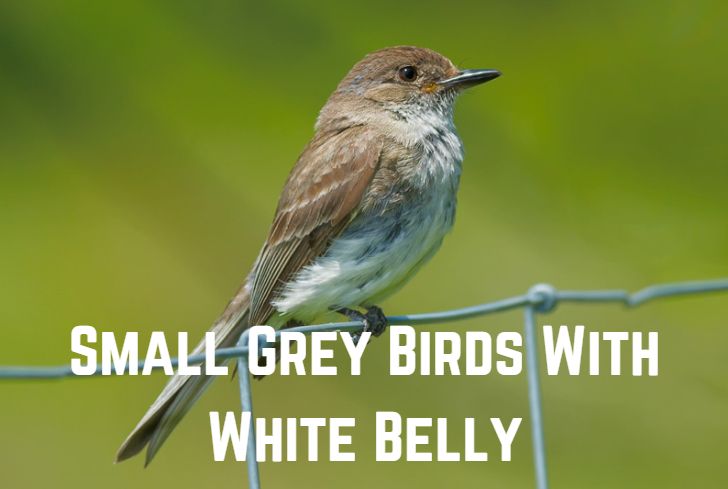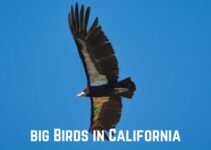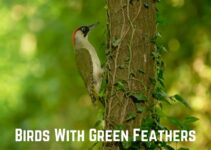Bird-watching is considered one of the most favorite hobbies in the world. People enjoy watching many birds, including sparrows, robins, eagles, hummingbirds and many more.
However, a particular kind of bird is often spotted that is small and gray with white bellies (or breasts). Neither do they have colorful feathers nor bright colors. These birds are easier to identify, lack other distinguishing features and blend effortlessly into their surroundings.
We have prepared a list of 13 different this kind of birds to identify some of which you might find backyard, and you may recognize them after reading this article. So, let’s continue reading to learn about some of these feathered friends.
Read: 15 Fascinating Animals With Biggest Eyes
Contents
13 Small Grey Birds With White Belly
1. Eastern Phoebe

The Eastern Phoebe is a migratory bird native to North America, where it stays from summer and spring and flies south for the winter. This small bird has a grey-brown body above with a white belly and whitish gray on the throat, chest and underside. It also has a small crest on its head to help avid bird watchers identify it.
They make nests in dense woodland, especially near water bodies from twigs and leaves and line them with hair, feathers, or moss to keep them warm and are often found to set up homes in abandoned woodpecker holes. They feed mainly on fly larvae, beetles, spiders, caterpillars and other bugs.
2. Willow Flycatcher

The Willow Flycatcher is the most beautiful and one of the smallest birds found in North America. Its olive-gray upper body, wings and tail, contrasting white belly, a white ringed eye, white wing bars and a small bill look fantastic. It breeds in deciduous woods or willows near water throughout the United States and Southern Canada.
Tiny Willow Flycatchers are challenging to spot in the woods. Their length is 130–150 mm (5.2–6 in), weighing 13.5 g (0.48 oz). You’ll require binoculars to spot a tiny Willow Flycatcher. Although they are small, they still fiercely protect territory and food. Their diets consist mainly of insects like mosquitos and hoverflies, but they feed on seeds and berries when this food becomes scarce.
3. Dark-Eyed Junco

It is another small, North-American bird like the willow flycatcher that can be identified with its pure-white underside, gray-brown upper parts, a telltale yellow spot on its head that changes with age, and of course, jet-black eyes.
These North American birds build their home in coniferous woods filled with spruce, fir, pine, or Douglas fir trees during winter. Then, they move to deciduous forests filled with maple, oak, aspen, cottonwood, and hickory trees in spring and summer. They prefer seeds from coniferous trees, as they live in these habitats throughout the winter.
4. European Crested Tit

The European Crested Tit is a Tit family member, usually seen singly or in pairs in deciduous woodland and coniferous forests throughout central and northern Europe. These agile little birds with acrobatic ability jump from branch to branch or hang upside down from a feeder.
This bird species is 10.5-12 cm long and weighs 10-14 g.
They have a white underside and dark gray upper parts, but the most striking feature is the head’s punk-rock-like black and white crest. When it’s down, they’re relaxed and is raised during territorial disputes or when it senses danger.
They nest on the ground or in low shrubs, and the female builds a neat moss and lichen nest on the forest floor. They feed on insects, spiders, seeds and berries.
5. Tufted Titmouse

The tufted titmouse is a small songbird seen across North America that measures just 5.5 inches in length and weighs 0.9 ounces. However, its white underparts, light-gray upper parts, and orange-colored flanks with their black and gray crest can be identified.
It can be found from Southern Canada through the maximum United States to Mexico and Central America. It sets up its home in many places like deciduous forests, shrublands, parks, and backyards. You can hear a Tufted Titmouse before you can spot their loud song. It uses this call to communicate with others about food sources and deliver warning signals.
6. Blue-Gray Gnat Catcher

The Blue-Gray Gnat Catcher is an insectivorous bird that feeds mainly on gnats, as its name suggests. However, gnats aren’t their only food source. They also eat spiders, insects, and insect eggs. With an average length of 4-5″ inches, it has blue-gray upper parts, pure white underparts, and a jet-black beak. It prefers deciduous woods and shrublands in southern Ontario, the eastern and southwestern United States, and Mexico.
They hunt by flying around 2 meters above the ground in low vegetation, then swooping down and catching insects on the wing. It can spot tiny insects from far away distances with its keen eyes and even hunt in low light conditions because of the 30,000 lenses (at least) in each large eye.
Read: 17 Phenomenal Animals With Patterns
7. Sagebrush Sparrow

Sagebrush Sparrow is the cutest, and one of the smallest common birds found all over North America, from Alaska to Arizona. They look very similar to their House Sparrow cousins; the only difference is their color. It is about 4.7-5.9 inches long and weighs 0.5-0.8 ounces. They have light gray upperparts, a gray head, and white underparts. The dark black crest can also identify it right in the middle of its chest.
Sagebrush Sparrow is most likely to spot in sagebrush fields like shrublands, prairies, grasslands, and other dry areas like deserts. They are exclusively insectivorous, feeding on spiders, beetles, grasshoppers, and other insects. But they also eat seeds, and certain fruits, including plant parts, when food is scarce.
8. Carolina Chickadee

Carolina Chickadee is a member of the Tit family found in the deciduous forests of Northern America. During the winter, Carolina Chickadee migrates south, setting up home in Alabama, Florida, and Georgia. It is seen as far South as Mexico.
It is a tiny bird that has a white chest, white belly, light gray upper parts, orange-brown flanking and a long tail larger than the proportion of its size. Their diet is mainly insectivorous, including berries and seeds. However, they also eat worms, spiders, and even mice at tough times.
9. Black-Capped Chickadee

The Black-Capped Chickadee from the Tit family is among North America’s few nonmigratory birds found in Southern Canada to Virginia and a familiar backyard visitor. The Black-capped Chickadee’s size ranges from 12–16 cm (4.7–6.0 in) to a weight of 9–15 g (0.32–0.50 oz). It has a gray body, white underparts, rust-orange flanks, and a black cap running through to the eye and creates a black mask with a black bib.
It is a highly social bird that lives in large flocks around the year and becomes more prominent in winter when they gather together for warmth and protection. Their diet changes from caterpillars during summer to seeds and berries in winter.
10. Northern Mockingbird

Northern Mockingbird is most identifiable with their two white wing bars, particularly visible while in flight. Their upper parts are gray-brown, and the underside is grayish-white.
They defend their territory aggressively and are spotted as single birds or monogamous pairs. They can copy another bird’s song, as goes with the name “mockingbird.” A male mockingbird can learn and mimic around 200 other songs in his lifetime. They feed from fruiting bushes and trees of blackberries, mulberries and hawthorns.
11. White-Breasted Nuthatch

The White-Breasted Nuthatch is undoubtedly one of the world’s smallest birds and is commonly seen across the United States and Southern Canada. It is a maximum of 5 inches long with white breasts and blue-gray upper parts, having a black cap and a wingspan of around 10 inches.
While living in deciduous forests, woodland, parks, and backyards, their diet consists mainly of nuts, but they also eat insects like beetles, caterpillars, ants, and spiders. In addition, they have unique feeding habits. For example, finding a juicy nut, they’ll fly to their territory and ram the nut into the bark of a tree to crack the outer shell and get the seed inside the nut.
12. Bushtit

This stout little bird is native to the Western United States and is found in woodland, scrubby areas, open parks, and backyards. Almost round in shape rather than long, the bird measures just 3 inches and weighs a minuscule 0.2 ounces having a soft gray upper part, a gray-white underside, a long tail, and a stubby bill with slightly brown tinges on the face.
It is fond of sunflower seeds, mealworms, and suet. Usually, it builds a nest hanging from a tree’s branch that measures a foot in length from spider webs and plant material, and it takes this small bird around a month to build.
13. Mountain Chickadee

It is common in the northern regions of North America and found in Canada, the Rocky Mountains, and parts of Alaska at high altitudes near streams or small rivers. The bird’s name is derived from its call, which sounds like “chick-a-dee.” It measures around 5-6 inches (13-15 cm) in length and has a wingspan of 7.5 inches (19 cm). Its black-striped mask can quickly identify it. It also has white eyebrows, a white or whitish gray underside, and gray upperparts with slightly darker gray flight and tail feathers than the wings.
Like other Tit family members, the Mountain Chickadee feeds on caterpillars and other insects during the summer and conifer seeds, suet, nuts, and berries during the winter.
Read: 17 Stunning Animals That Live in Water and on Land
Final Thoughts
You will find most of these small gray birds with white bellies in your backyard if you supply them with food during the winter months. Most birds prefer to eat insects as they are high in protein and are also an excellent food source for raising their young.
So, ensure you fill your feeders with these offerings to attract any of them to your backyard. But remember, these creatures are fierce competitors for resources because they will chase off larger birds from their territory.







